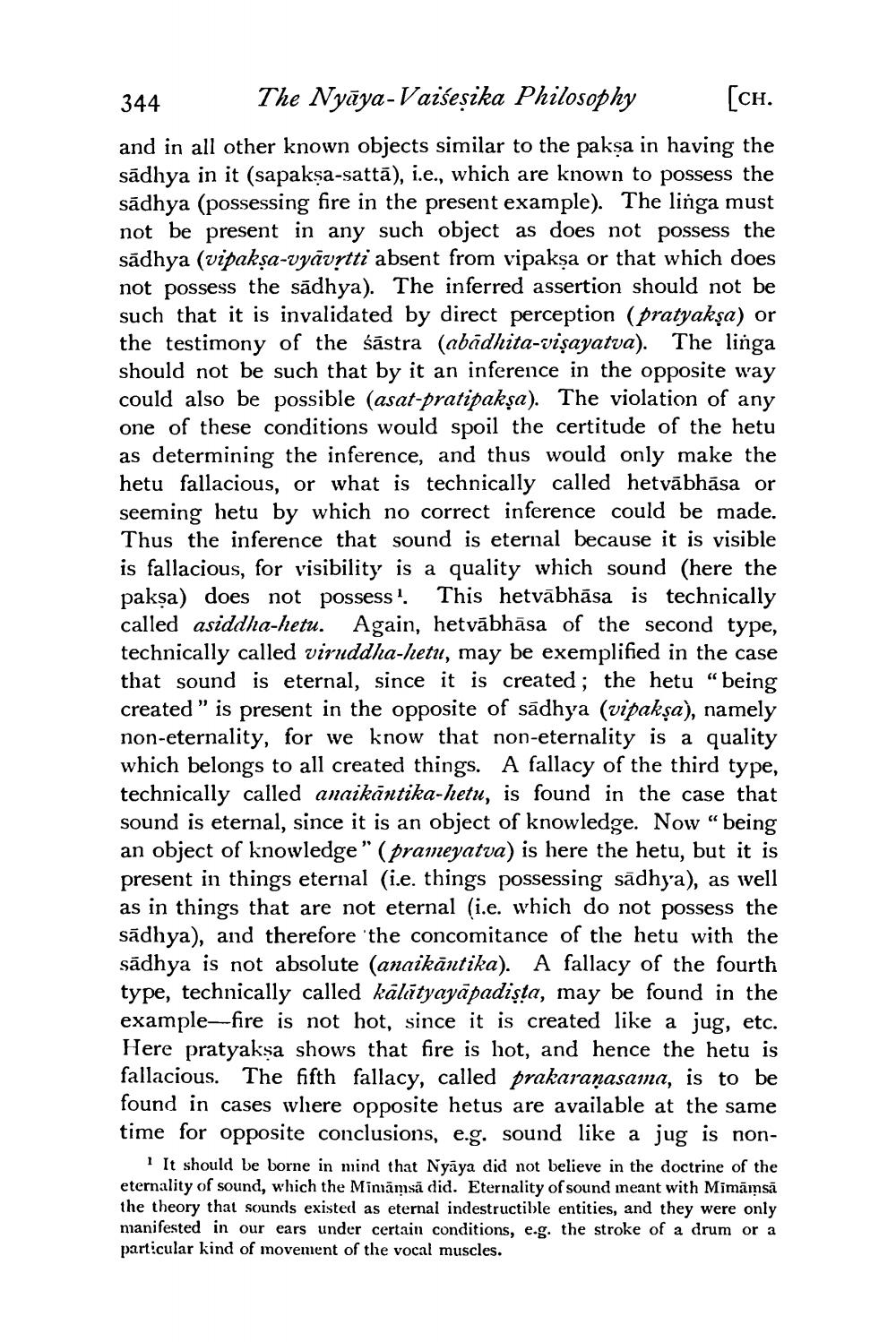________________
344
The Nyāya-Vaiseșika Philosophy
[CH.
and in all other known objects similar to the paksa in having the sādhya in it (sapaksa-sattā), i.e., which are known to possess the sādhya (possessing fire in the present example). The linga must not be present in any such object as does not possess the sādhya (vipakşa-vyāvrtti absent from vipaksa or that which does not possess the sādhya). The inferred assertion should not be such that it is invalidated by direct perception (pratyakşa) or the testimony of the śāstra (abadhita-visayatva). The linga should not be such that by it an inference in the opposite way could also be possible (asat-pratipakșa). The violation of any one of these conditions would spoil the certitude of the hetu as determining the inference, and thus would only make the hetu fallacious, or what is technically called hetvābhāsa or seeming hetu by which no correct inference could be made. Thus the inference that sound is eternal because it is visible is fallacious, for visibility is a quality which sound (here the pakşa) does not possess!. This hetvābhāsa is technically called asiddha-hetu. Again, hetvābhāsa of the second type, technically called viruddha-hetu, may be exemplified in the case that sound is eternal, since it is created; the hetu" being created " is present in the opposite of sādhya (vipaksa), namely non-eternality, for we know that non-eternality is a quality which belongs to all created things. A fallacy of the third type, technically called anaikāntika-hetu, is found in the case that sound is eternal, since it is an object of knowledge. Now" being an object of knowledge" (prameyatva) is here the hetu, but it is present in things eternal (i.e. things possessing sādhya), as well as in things that are not eternal (i.e. which do not possess the sādhya), and therefore the concomitance of the hetu with the sādhya is not absolute (anaikāntika). A fallacy of the fourth type, technically called kalatyayā padista, may be found in the example-fire is not hot, since it is created like a jug, etc. Here pratyaksa shows that fire is hot, and hence the hetu is fallacious. The fifth fallacy, called prakaranasama, is to be found in cases where opposite hetus are available at the same time for opposite conclusions, e.g. sound like a jug is non
It should be borne in mind that Nyāya did not believe in the doctrine of the eternality of sound, which the Mināmsā did. Eternality of sound meant with Mimāṁsā the theory that sounds existed as eternal indestructible entities, and they were only manifested in our ears under certain conditions, e.g. the stroke of a drum or a particular kind of movement of the vocal muscles.




